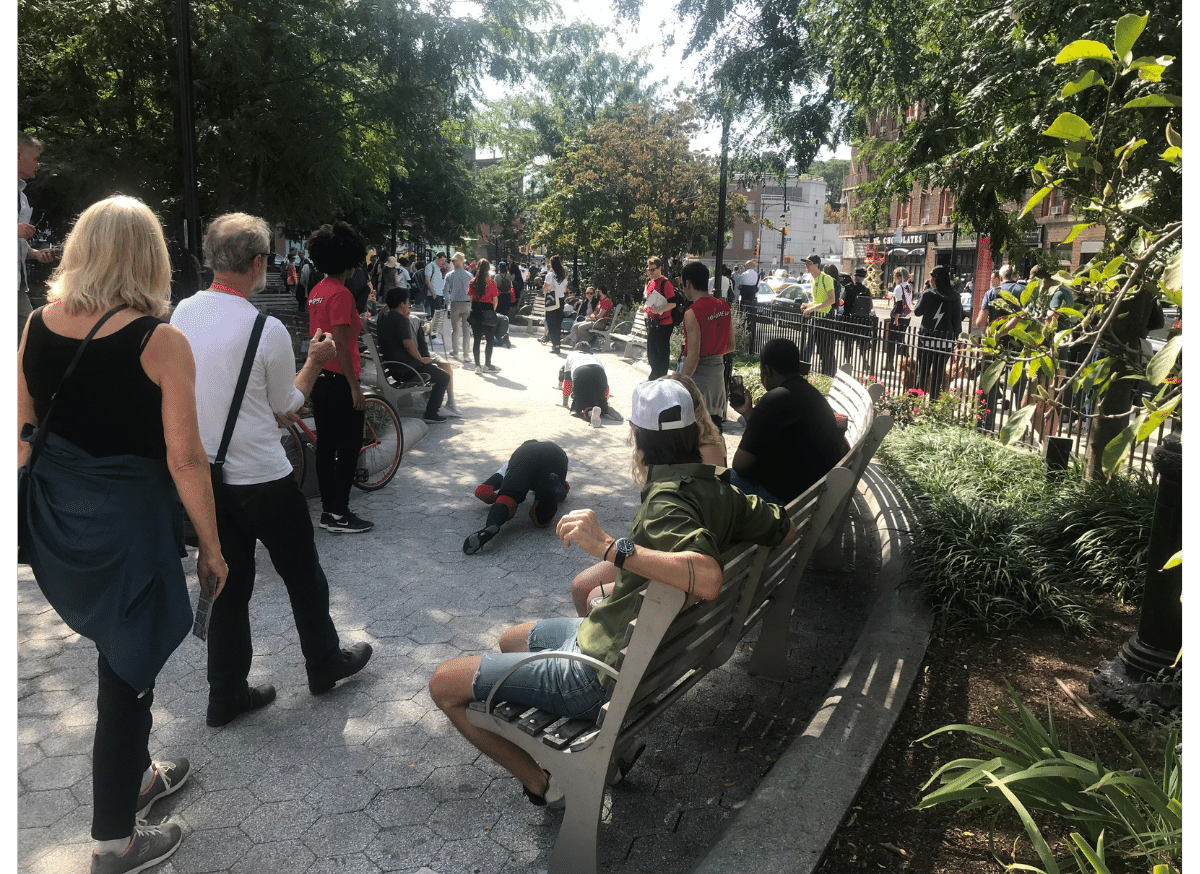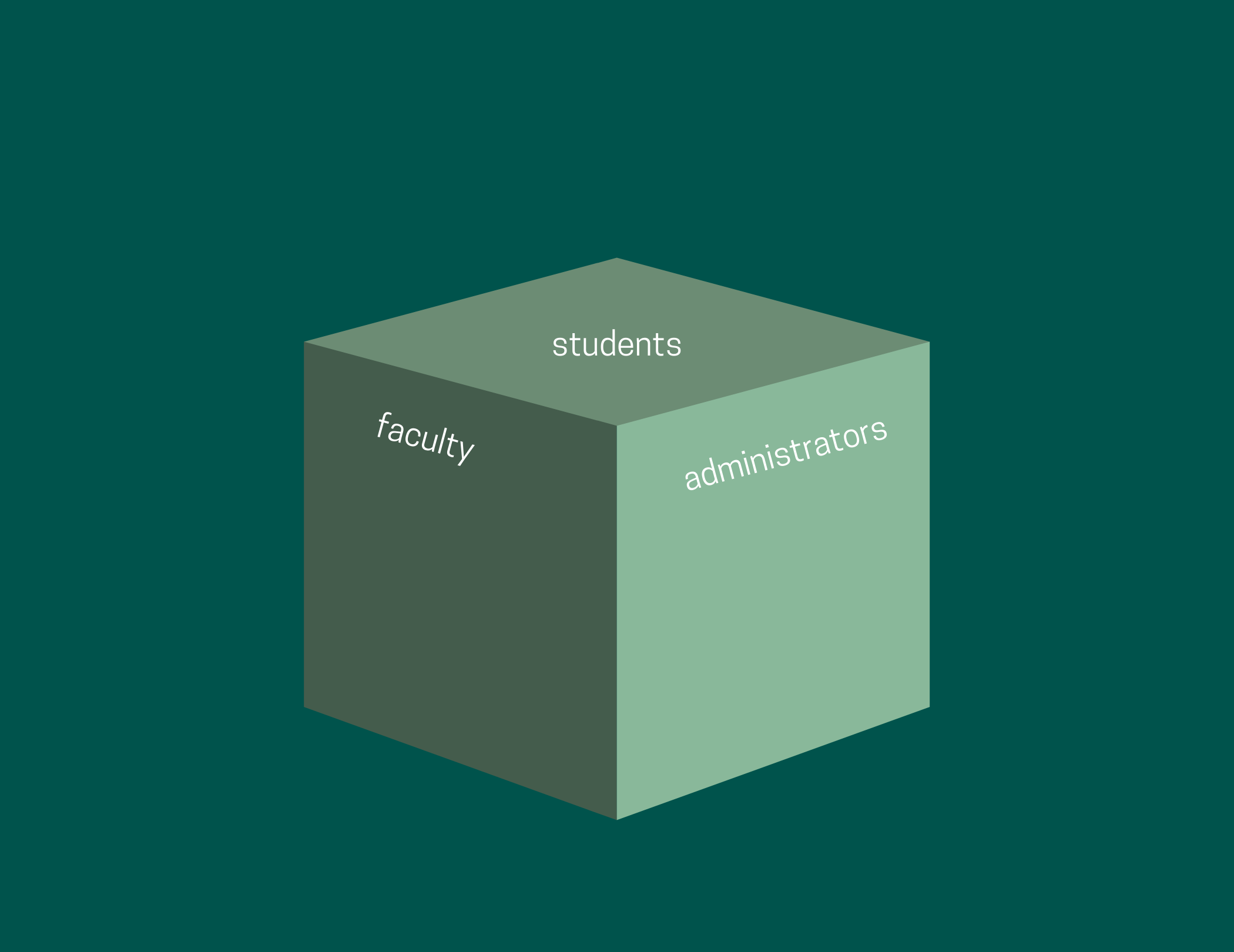Coda: Toward Horizontal Models of Transformation
Coda: Toward Horizontal Models of Transformation
Why horizontal models matter

The coda for this resource on how anti-racist efforts can unintentionally produce burdens for students of color aims to do two things. First, it provides a sense of how many students perceive the way change happens at Barnard, a place that prides itself on being a racially diverse, minority-inclusive institution with a highly visible culture of activism. But to many students, it can feel that the bulk of this activist and change-oriented work is left for them to figure out on their own. In light of this, the coda also aims to recommend some initial steps that readers can take to address the conditions that lead students of color to feel that they bear the largest responsibility for addressing inclusion. Ultimately, this coda advocates for members of the Barnard community to develop horizontal forms of collaboration in which faculty, administrators, and staff work alongside students to create lasting change.
The horizontal models of working toward racial justice that we have in mind would begin with top stakeholders, such as faculty and administrators, initiating and actively working toward transformation on this campus in collaboration with students. This model is important because it can help correct what often appear to students as inequitable assignments of labor that produce both material and emotional burdens. If students do not see faculty and administrators participating in the labor of racial justice, then the responsibility for doing that work piles on top of students’ schedules as they balance school and jobs. Given that holding multiple jobs while being a full-time student is more common among those who hold marginalized identities—the same people who are at the forefront of fighting for more visibility and acceptance of their identities and communities—this produces other inequalities. On top of their work as students, Black students and non-Black students of color regularly have to carry the emotional load of supporting and fighting for their communities. The college cannot burden marginalized students with the responsibility of transforming Barnard and then champion their accomplishments without more directly assisting them in their labor.
The image for this subsection is a photograph of Pope.L's Conquest, a "group crawl" that took place in Manhattan on September 21, 2019. Pope.L, who cheekily describes himself as "The Friendliest Black Artist in America," is well-known for his playful explorations and exploitations of the incoherence of cultural binaries, which he engages through performances, sculptures, sketches, installations, found objects, and other modes of artistic production. In one of his best known performances, a durational work that took place in stages in New York City called The Great White Way, Pope.L dressed himself in a Superman costume, strapped a skateboard to his back, and proceeded to crawl from the base of the Statue of Liberty up Broadway, interacting with concerned and curious passersby while resolutely performing his task. As Pope.L has put it, crawls are experiments in what one can learn from giving up verticality, not only physically but also symbolically. In Conquest, Pope.L's practice of public crawling became a collective event, in which the spectacle of a mass of people willfully becoming horizontal—with all the vulnerabilities this process entails—dissolves boundaries between spectators and performers.
Working toward horizontality

Educators at this college have an opportunity to use the different collaborative opportunities that are available to them, like workshops, assemblies, and communities of practice, to identify and define how they can work equitably alongside students on anti-racist initiatives. Generally speaking, students do not have windows into these collaborative spaces, so if conversations about how to work with students are already happening, then they should be shared in some way.
An example can help explain why establishing more open communication with students is an important step in building horizontal forms of collaboration. In 2020, many departments across the country released statements describing their commitments to anti-racism. One Barnard department pledged that it would “look forward to actively working with others to bring change to our communities and the United States” and then, in further conversations, recommended that students spearhead this effort. But it wasn’t clear to the students who read this statement how faculty members in this department were taking tangible steps to contribute to these changes themselves. At first, this call for student leadership appears to be an important first step with what we are calling a horizontal model of anti-racist collaboration—and in many ways, it is. But when students are being asked not only to be students but to improve their own conditions of learning, it would be meaningful to share what exactly faculty are doing with each other to meet these goals. This kind of communication would allow us to have different conversations. How does the work that faculty, administrators, and students are doing within their peer groups align with or build upon one another? What is each group’s role and responsibility in constructing and maintaining an anti-racist institution? When is it necessary to work within our groups and when is it necessary to move outside of them? While we encourage faculty members and administrators to specify how they will work alongside students, we also believe there must be an active, reciprocal conversation between all these groups when they are working on diversity initiatives.
Many of the college’s public-facing efforts at inclusion have focused on encouraging certain behaviors and self-reflective practices in and outside of the classroom. While this is valuable work that must continue, there are two ways it can go further. First, it does not appear that many of these initiatives include student input or involvement. But students of color should be involved throughout the process of any student-focused projects that aim to make the campus safer and more inclusive, and they should be paid for their contributions to such projects. Diversity initiatives can feel empty and tiring if they do not give marginalized students a chance to articulate their needs and desires and if they do not compensate the people who help make the projects a reality. Allocating funds to support students who contribute to diversity initiatives is a necessary step toward producing a more equitable form of collaboration. This would allow for students to be respected for their input at the same level as faculty and administrators and it would ensure that anti-racist initiatives do not exclude or exploit one of the groups they are meant to support.
Second, we also believe that horizontal initiatives, in which students work equitably alongside others at the college, should not only be pursued within classrooms, but they should be interdepartmental. In other words, this approach to racial justice should happen in and across the departments that students consistently interact with: in financial aid, housing, and more. While this does not seem to directly concern pedagogy, student experiences navigating these offices does affect how they are able to engage with the classroom.
Beyond permission, toward collaboration
The horizontal forms of collaboration on racial justice that we call for ultimately still need to be defined. The steps this coda identifies are just that—steps in a process that must be taken as a community. Just as other sections of this resource conclude with questions for faculty and students, we also have chosen to end by posing questions that can serve as a starting place for producing a less hierarchical way of committing to and sharing responsibility for producing change at Barnard.
For faculty and administrators
How do you, as a faculty member or administrator, define offering “support” to students? When students approach you with an idea on how to make Barnard more inclusive, how do you respond? What types of encouragement do you provide students? What types of actions have you taken to demonstrate your support?
For students
What have been meaningful forms of faculty or administrative support you’ve experienced? How would you describe on-campus activism? What does student-led activism mean to you? What feeds the culture of activism at Barnard College and how can it be expanded equitably